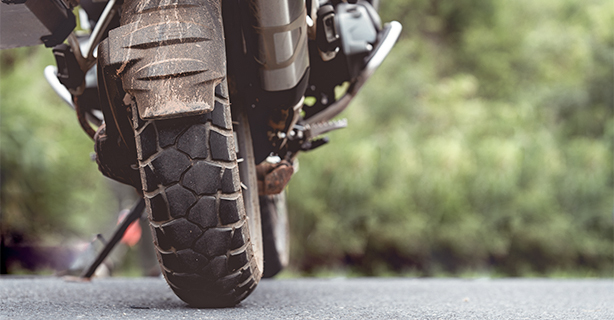Check your tire tread depth before leaving on your long-distance tour.
0 min. read
Getting ready for a long-distance tour this summer requires planning and attention to detail. In addition to scheduling vacation time, you'll also want to take care of route selection, picking places to visit, making hotel reservations, and perhaps rally registration. Then, there are all the pre-departure activities—including inspecting riding and rain gear, packing clothes, and, most importantly, servicing your motorcycle.
How far will your motorcycle take you?
Inspecting and servicing your motorcycle before riding off goes a long way towards avoiding roadside breakdowns and losing riding time for routine service. Be sure your pre-tour check includes looking at the remaining service life of your motorcycle's tires. Touring can wear tires faster than expected. Here are some of the reasons why:
Extra weight from travel gear
Riding two up
Increased mileage
Higher average speed
More freeway riding
Remember, your motorcycle depends on only two small contact patches for traction. That means your safety rides on your tires having more miles of tread life than the distance you plan to travel.
Why tire tread depth matters and how to measure it
The contact patch where rubber meets the road has two main sections—tread blocks and the grooves that channel rain away to maintain wet traction. The tread blocks create traction and their ability to grip the road depends in part on flexibility, which decreases as they wear down. As tread depth decreases, the rain channels and their ability to maintain wet traction also decreases. Tire tread depth is measured as the distance between the bottom of the rain grooves and the top of the tread blocks. On motorcycle tires, measure the tread depth in the center of the tire at several places. The lowest measured depth is the true indicator of the remaining tire life. There are two common methods used to measure tread depth—the coin test and tread depth gauges.
Coin test
Two different coins can be used as quick and handy gauges. Each are read the same way. Insert the coin in the rain groove with the top of the President's head pointing inward. When you can just see the top of the President's head you know the depth:
U.S. Quarter: Seeing all of Washington's head means there's a 4/32-inch tread depth.
U.S. Penny: Seeing all of Lincoln's head means there's a 2/32-inch tread depth.
Tread depth gauge
The most accurate way to measure tread depth is with a gauge. It has a probe that's inserted into the rain groove, while the body of the gauge is pressed against the tread block. You read it just like a pencil-style tire pressure gauge.
Tread wear indicator bars
These are small raised bars across the bottom of the rain grooves that show when the tire is at the end of its service life. Typically, these are about 1/32 to 2/32 of an inch tall. When the tread is even with the wear bars, you need to replace the tires before riding any further on them.
Know the limits and stay within them
Each tire manufacturer has their own recommendation on when to replace tires based on remaining tread depth. The average recommendation seems to be when tread depth reaches 2/32 or 3/32 of an inch. Different types of tires have different estimated average mileage service life. Measure your tread depth before you leave and follow the manufacturer's recommendation on replacement, and you'll be able to ride reassured on your tour.
Till next time, ride safe!
Related links
Your helmet protects your head. Which is the right motorcycle helmet for you?
Follow these tips and tricks for long-distance motorcycle trips.
The general information in this blog is for informational or entertainment purposes only. View our blog disclaimer.
*Data accuracy is subject to this article's publication date.







